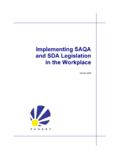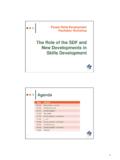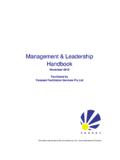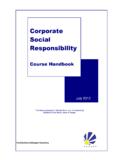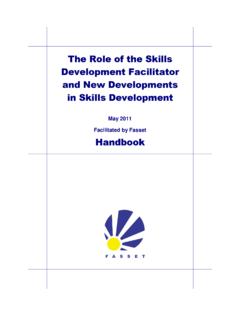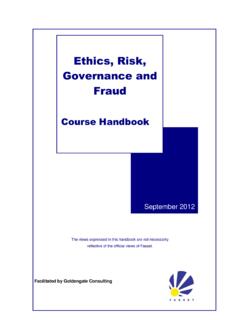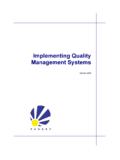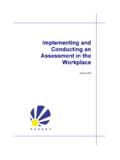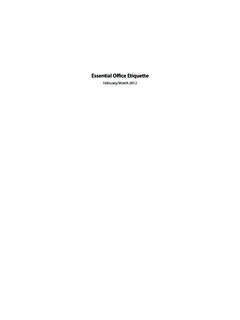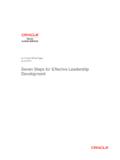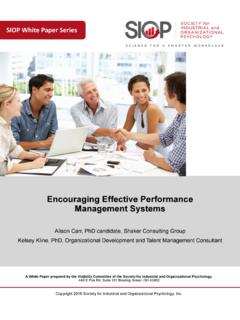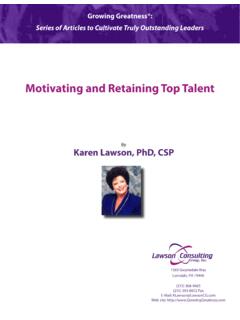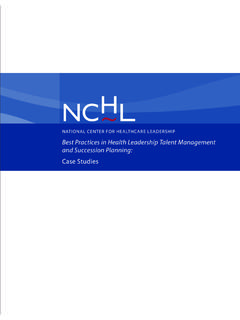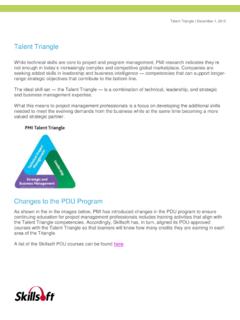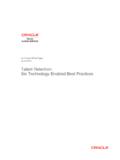Transcription of Talent Management Toolkit - Fasset
1 Talent Management Toolkit Terry Meyer November 2005 ALL RIGHTS RESERVED COPYRIGHT Disclaimer Publication or other use of this document by any unauthorised person is strictly prohibited. The views expressed in document are, unless otherwise stated, those of the author and not those of Fasset . Talent Management 2 INTRODUCTION This Toolkit has been designed to provide some templates and typical documents used for a Talent process. The policy document provides a draft policy, setting out the purpose, principles, elements and roles involved in a Talent strategy. The Career Development Process is a framework which shows the relationship between the elements of a career development system.
2 The Personal Learning plan is a template to capture very specific plans to ensure that effective development occurs. It ensures that learning is relevant to both the person s current job and possible future roles. It ensures that learning involves far more than simply training or study. The Succession Plan provides a template to identify potential replacements for key positions in the short, medium and long term. Where obvious gaps or risks occur, appropriate action can be taken. The succession plan also provides a basis for relevant, targeted learning to prepare people for future roles. The Success Criteria Template provides a format to identify key success criteria for a position and to assess an individual against those criteria.
3 Many of the criteria will be competencies although other success criteria may be of significant importance. The Derailers refer to those behaviours which can render a person unsuccessful in a role even though the technical competence is applied. All of these documents are examples and need to be adapted to meet the needs of a specific organisation. Talent POLICY DOCUMENT Top Company recognises that the expertise of it s staff is central to the achievement of it s growth strategy. Top Company is therefore committed to ensuring that staff are able to develop their potential to meet their own aspirations and enhance the value that Top Company provides to clients. The Talent system has a number of objectives.
4 Ensure that Top Company attracts and retains the best Talent and skills available in the market Ensure that Top Company clients have the benefit of the best Talent and skills available in the market Talent Management 3 Build commitment of staff to Top Company through the provision of opportunities for them to develop their careers to meet their career aspirations Ensure that mission critical positions and roles are staffed with key staff Contribute to the transformation of Top Company through attracting and retaining HDSAs in accordance with the organisation s employment equity goals Provide a pipeline of Talent and skills to staff the organisation in the future through promotion from within.
5 This document sets out the principles and processes which Top Company will apply to ensure effective Talent Management . Definitions: The following definitions apply to specific terms: Mission critical position: this is a position which is critical to the functioning of Top Company. A vacancy or incorrect appointment would cause substantial disruption to the functioning of the organisation. Due to the scarce skills involved it would be difficult to fill a vacancy. Key staff: These are staff who have been identified as having important skills and experience or who have high potential as future leaders in the organisation. The loss of key staff would have a substantial impact on the organisation.
6 Qualified HDIs with potential automatically fall in this category. Success Criteria: The competencies and other criteria which are important to successful performance in a role or position. Potential: the ability to perform effectively in the future in other possible roles. Performance: The extent to which a person currently meets the requirements of a role or position. Principles: The following principles will be applied in implementing Talent Management within Top Company: Top Company will be recognised as an Employer of Choice through effective branding, leadership and competitive remuneration. This will be demonstrated through achieving a position within the top 20 Best Companies to Work For competition.
7 The appointment of people to roles or positions in Top Company will be based on fair, transparent and equitable processes All mission critical positions will have clear success criteria which will be used as the basis for deciding on appointments Talent Management 4 As far as possible the assessment of people s suitability and potential to fill specific roles or positions will be based on objective measures using as much information as possible People with key skills will be able to follow a career path involving Management or a technical speciality, depending upon their aspirations and skills All key staff will have personal learning plans which aim at enhancing performance in their current role as well as preparing them for possible future roles.
8 These will be formally monitored to ensure implementation. It is considered desirable that key staff identified as having leadership potential have broad experience in variety of different roles and parts of the organisation. Formal structures (panels) and processes (succession) will be applied to ensure that there is consistency in evaluating potential and providing staff with feedback on career development options Each key member of staff will have a formal career discussion with the relevant person at least once per annum to align personal aspirations with organisational opportunities Particular attention will be paid to the attraction, development and retention of HDI staff All key staff will have a mentor or coaching network to facilitate ongoing development, particularly that required for registration as a Professional Registration.
9 Staff will be expected to take considerable responsibility for their own career development Learning should be designed to ensure that people are prepared for major transitions, such as the transition from Auditor to Audit Manager where new roles require new competencies and skills. ELEMENTS OF THE Talent Management SYSTEM Talent Panels: Talent panels will be created for each major business unit of Top Company. They will comprise the top Management of the business unit and will be responsible for career development and succession of all positions up to Practice Leader level. The Executive team will be the Talent panel responsible for career development and succession of all positions above Practice Leader level.
10 The Talent Panels will meet as required to undertake their responsibilities. The Talent Panels will have the following responsibilities: Talent Management 5 Verify the success criteria for mission critical positions Evaluate the potential of all key staff based on various assessments Agree the succession plan and ensure alignment with individual aspirations Identify skills risks based on the succession plan Verify the personal learning plans of all key people and ensure that they are implemented. Role Success Criteria: Each mission critical position will have a position profile setting out the success criteria for the position. These will be closely aligned to the KPAs for the position and will form the basis for evaluating people for appointment to the position.
